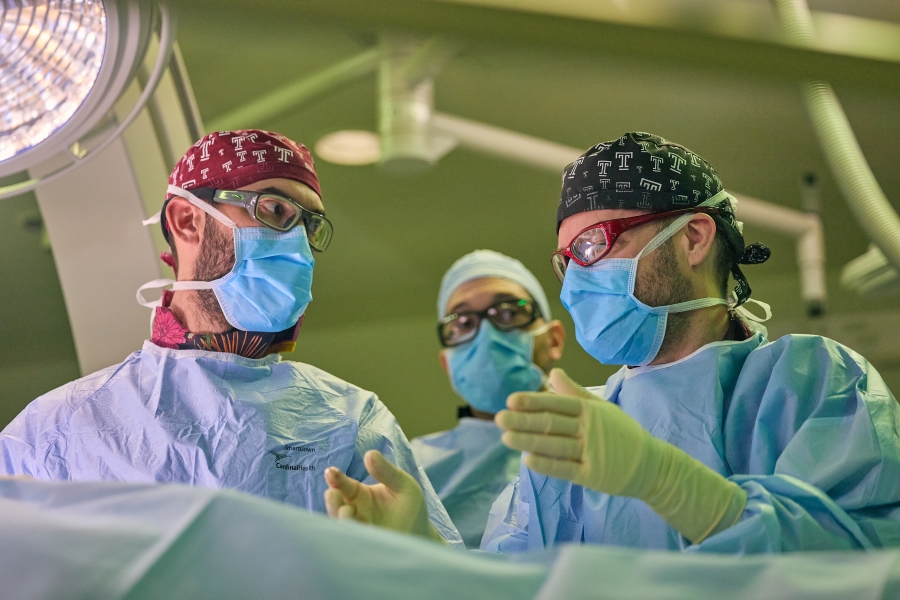Once your medical team determines the cause of your arrhythmia, they’ll work to develop a treatment plan that is personalized to you. This plan may consist of a simple lifestyle change, medication or a specific medical procedure.
Lifestyle Changes
Sometimes there are associations between arrhythmias and other medical conditions or parts of life that can be addressed. For example, some arrhythmias can be related to caffeine, alcohol, stress, adrenaline-producing activities, dehydration, fatigue or illness.
If the “triggers” of an arrhythmia can be identified, sometimes the treatment may be to avoid the trigger, such as reducing alcohol or caffeine intake or getting more sleep.
Obesity is a common cause of arrhythmias, both directly and due to the other medical problems it can create, such as sleep apnea, high blood pressure or diabetes. For these individuals, weight loss is an excellent way to help control their arrhythmias.
Other medical conditions can sometimes cause arrhythmias, and treatment of these conditions can result in a reduction or elimination of the arrhythmia problem.
Medications
Medication can be an effective way to treat and prevent an irregular heart rhythm. These medications come in several different categories and include:
- Beta blockers (which reduce the heart’s sensitivity to adrenaline, such as metoprolol, atenolol, nadolol, carvedilol, acebutolol and pindolol)
- Calcium channel blockers (which slow down electrical signals as they travel from the top half to the bottom half of the heart, such as diltiazem and verapamil)
- Medications called “antiarrhythmics” that directly change the electrical activity of heart cells (such as flecainide, propafenone, sotalol, dofetilide, amiodarone, procainamide and dronedarone)
Medications that reduce blood clotting (called anticoagulants or “blood thinners”) are prescribed when there is an arrhythmia or heart condition that could result in blood clots or a stroke (such as aspirin, warfarin, Pradaxa, Xarelto or Eliquis).
Procedures and Surgery
The goal of any arrhythmia procedure is to eliminate symptoms and risk so that you can enjoy an improved quality of life. Arrhythmia procedures can vary from a quick, non-invasive outpatient procedure to ones that require hospitalization.
Some examples of electrophysiology procedures include:
Cardioversion
Cardioversion is like a quick “reset” of the heart and is very effective for getting the heart back to its normal rhythm. Unfortunately it does not prevent the possibility of future arrhythmias.
During this procedure, a quick electrical shock is delivered to the heart using two large sticky pads that are placed on the chest and back. The shock also causes the muscles of the chest to suddenly contract, so it is done under anesthesia to avoid any pain or discomfort.
Pacemaker
Pacemaker is a small electrical device that is implanted under the skin, usually just below the collar bone in the chest, and is attached to one, two, or three small electrical wires that are threaded into a vein and then inside the heart.
An electrical pacemaker is usually used to treat an abnormally slow heartbeat that causes symptoms (such as lightheadedness, fatigue, inability to exercise, shortness of breath or fainting), or a very slow heartbeat that could be dangerous.
Sometimes a special 3-wire pacemaker system is used to re-coordinate a heart that is beating in an uncoordinated way. A new type of extra small pacemaker is being studied, which does not have any wires but instead is a small metal capsule that is implanted inside the heart itself.

